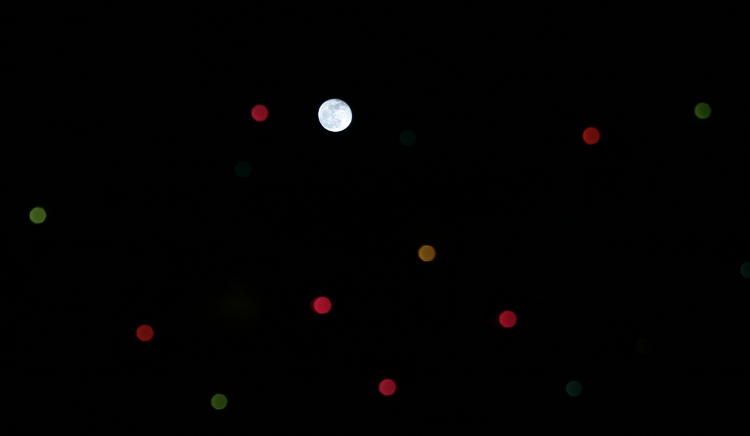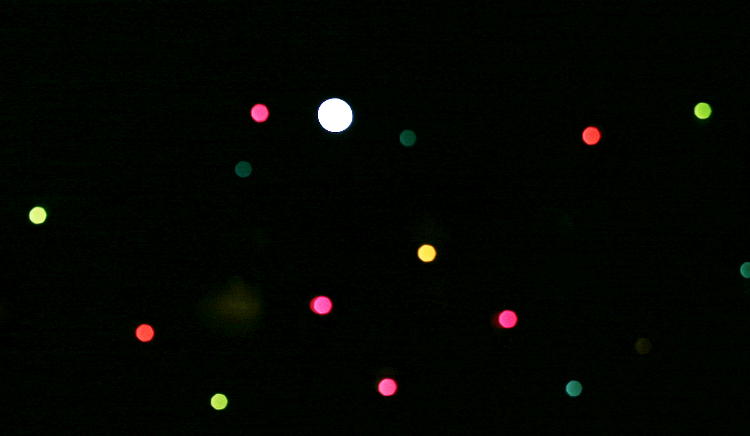
First off, I’m going to refer you to this post just for trivia’s sake, because the image above was shot the same night. While I wrote that I wasn’t shooting the full moon, that wasn’t actually true – I was just illustrating shooting by the full moon for that post.
But before that happened, I fired off a few shots at home, aiming up alongside the holiday lights still strung along the rail of my second-story balcony. I suspect I wasn’t bothering with the tripod at that point, because this image shows the hallmark of shooting with a wide-open aperture: all of those defocused lights are round in shape. If the f-stop was smaller, they’d be in the shape of the aperture itself, and I have a few examples of those. With a very small aperture, you can render bright points of light as starbursts, but only if they’re in focus, and even with the increased depth-of-field, I wasn’t getting the moon and my balcony rail (only a few meters away) in the same focus. I had the choice of going with starbursts and an unfocused moon, or a sharp moon and round unfocused lights, so here we are.
Given that this was taken nine years ago, I had to rely on memory, and was pretty confident that the lights had been wrapped around the top rail – which meant that the moon appearing almost between some of the lights indicated that it was just above the rail itself (perspective-wise, anyway – again, going from memory, but I’m also pretty confident the moon remained 385,000 km away, and this is supported by its size in the frame.) Curious, I threw the Curves way off the scale in GIMP with the hopes of rendering ever-so-faint evidence of the railing in the image. Result: no evidence – just not enough light captured during the exposure.
What I did bring up, however, were a few more lights (and some unexplained blotches, very faint evidence of some kind of reflected light or cloud.)

I took it a lot farther than this just to see what appeared, but backed it off because this was sufficient to illustrate the missing lights. It seems the blue bulbs (and I’ve seen this before) are a lot lower in light output than the others and thus don’t expose as brightly. Which is curious, because they’re all the same kind of filament and wattage, so the difference remains in the glass tint. I have a vague suspicion some of the output borders on the near-ultraviolet and gets filtered out by the camera and lens coatings, but that’s just idle speculation, and something that I have no way of testing. Well, okay, no easy way of testing – I suppose I could rig up several strands of nothing but blue bulbs, here in the office where I park my ass all winter, and see if I get a tan…




















































